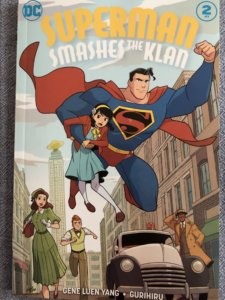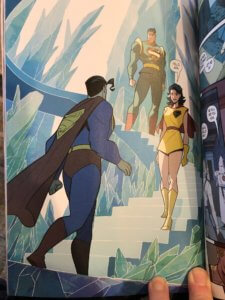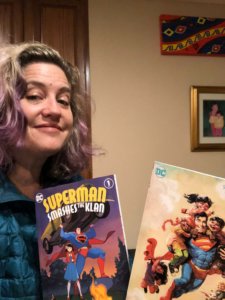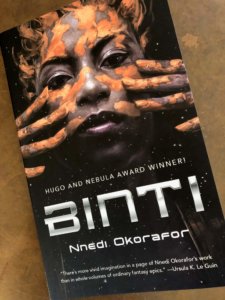Multicultural Protagonists
TRAIN TO BUSAN, A No Spoiler Review
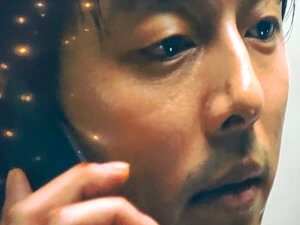
TRAIN TO BUSAN, set in Korea, is subtitled for English (and other language) speakers. This film was written for the screen by Sang-Ho Yeon and Joo-Suk Park and directed by Yeon. The film would probably receive a PG-13 rating for gore, the zombie kind, nothing worse that what you might see on AMC’s The Walking Dead. You can view this film for free if you are an Amazon Prime member. I loved it. In fact, I think the writing is brilliant.
Click here for the film’s trailer.
 Short Review. Five reasons I highly recommend TRAIN TO BUSAN
Short Review. Five reasons I highly recommend TRAIN TO BUSAN
- Perfect writing/storytelling, including the pacing that ramps up quickly at about 10 minutes in
- Sympathetic characters. The father/daughter story at the heart puts this zombie flick in a category above most others
- Another fresh setting. By now, if you’ve read a few of my reviews, you know I am an advocate of consuming stories told outside of the Hollywood bubble
- Once the action starts, it doesn’t stop and much of it takes place in the close confines of a train or a train station
- A pitch-perfect ending
Longer Review
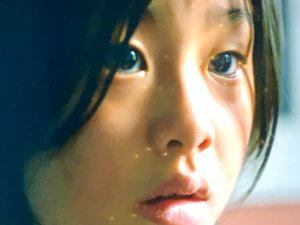
Seok-woo, a divorced father of one 10yo (or so) daughter, Soo-an, is a fund manager who works long hours. While he works, his mother cares for his daughter. They are based in Seoul, Korea. On the day the audience meets this family (the first minutes of the film), Soo-an is anticipating her birthday on the following day. She longs to be with her mother on her birthday. The problem, her mother lives in Busan, so Seok-woo must decide if he will accompany his daughter to Busan during a time when he is overwhelmed with work. He decides he will. In the first minutes, the audience has learned he has NOT been the most attentive father due to his demanding job. Is it guilt or something else that urges him to make this decision?
The decision is a sacrifice from his perspective, though he assumes he will be able to go very early in the morning, deposit his daughter in Busan and still return to Seoul to work a half day. The train trip (normally) is about 3 hours.
However, as they embark on the journey, a few unusual situations emerge, scenes the audience anticipates and knows are signs of something gone wrong.
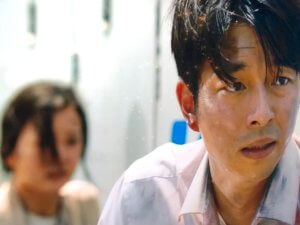
The rest of the narrative is not a simple zombie story. Seok-woo must fight and learn to sacrifice, not just for his daughter, but for others. While he journeys, he will have many teachers, including his daughter. Amid all the stress, he grows and changes.
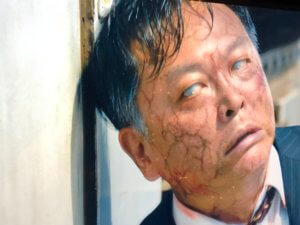
DARK/WEB, Chapter 8 A Final Review with a Few Minor Spoilers
My 8th post on this particular Amazon Prime series. I reviewed chapter by chapter (episodes are called chapters). For a review of the pilot, click Chapter 1.
Today I viewed the finale.
Question that arose…Will DARK/WEB will have a second season? Will there be enough interest? I have no way of knowing. What I can say is this…
There is a kind of resolution that takes place in this final chapter.
- Molly is found
- The mystery of what she was up to and why she was drawing her friends toward her hiding place is solved
- There are a couple of big reveals…one of which doesn’t pack the emotional punch that it should
- A perhaps too tidy wrap-up
- More horror story tropes…like a corpse, a cabin in the woods, a stormy night without power
The ending to this series felt overly ambitious and contrived…a lot of explaining right at the end to tie up all of the loose ends. Sometimes the characters acted in a way that didn’t make sense to me, didn’t see human, but served the overall plot. I always get frustrated when this is the case. There is a campy nature to the series, maybe this is part of the fun…perhaps another horror trope? However, it also takes itself VERY seriously at times, so I was trying to take it seriously too and sometimes the camp did not match the tone of true evil that was being portrayed.
However, I will give the series lots of chops for these elements:
- An ambitious vision in its attempt to unveil evil in our society
- A diverse cast of characters, (diverse in ethnicity and sexual orientation)
- A female POC director. I loved the direction overall…I wasn’t wild about the all the writing, but hey…I am a writer and am always more picky about the writing than the directing.
Overall, I recommend DARK/WEB if you have the stomach to watch horror/scifi.
DARK/WEB, Chapter 7 Minor Spoilers
7th and Penultimate Chapter. My 7th review in 7 days.
This review will contain spoilers for earlier episodes and minor spoilers for this episode (episodes are called Chapters), so be warned. Go back to menu or click PILOT if you want to read an introduction to the series.
I’ll say a little about the structure of the series at this point.
- Short stories, written by Molly are clues that will help her friends find her. All of the stories are dramatized on screen. This image, for example, is from one of the Molly’s stories called Viral. Nearly every chapter features one of Molly’s stories. About 15 minutes of screentime in Chapter 7 puts the audience in the world of Viral.
- All of Molly’s stories are dark, some are pure horror and very gruesome. I almost stopped watching this series after Chapter 2 because of it. Kim Rider, who has read all or most of Molly’s stories as they were online dating, says that Molly uses stories to work out the darkness in her own life.
- There are a variety of interesting filming techniques in DARK/WEB. I’ll highlight one. Notice the image posted above with words across the character’s face. These are words of a screenplay being typed by this particular film student, as she sits at her computer. She is the main character in Viral. This view through the computer into the scene has been used throughout the series and gives that creepy feeling that someone is watching from inside or beyond our screens. The audience sees what is taking place, but the characters don’t and we don’t know who is watching…that is unnerving and puts the audience on edge, exactly what the story creators want.
- Viral is a story about cyberbullying. The audience understands that unfortunately, cyberbullying takes place in real life. This story may be fictional, but it hits close enough to home to bring about reflections of human cruelty and evil, evil that exists in seemingly normal, everyday people. Looking at cyberbullying headon is horrific and not everyone’s cup of tea. As I indicated above, I almost stopped watching after chapter 2. Viral was also hard to watch.
The story creators of DARK/WEB have given their series this title for a reason. It is documented that the secret and more anonymous world of the dark web exists and exhibits the worst side of humanity. If you are squeamish or needing something more uplifting as entertainment, please be warned. We all know that there are many good people in our world (and that even the “evil” people have potential for redemption…at least I believe that) and most of us hope that the good will ultimately triumph over evil by the tale’s end. We will see…
DARK/WEB Chapter 6, No Spoiler Review
6th post in 6 days…
Major backstory episode for the larger story arc, which I appreciated. It was the right time to give the audience more reveals. This review will have spoilers of the previous Chapters. For an introduction to the series and no spoilers, click the Pilot.
Pictured is Zach Sullivan before he has his mental break. In chapter 4, he is visited by Ethan in the mental hospital, so the audience meets him well after this scene with Molly. One suspects something bad went down at the job because in the hospital, he freaks out when a phone is brought near him. He and Molly were colleagues at Citadel, the computer/systems security company. Somehow, all roads are leading to Citadel…or are they?
Molly and Zach rely on one another for help with coding (actually…Molly may be the smarter of the two, though Zach has been at the company longer). As they lunch together at work, Zach and another coder tell Molly about Citadel’s secret project called MIHR. Zach is applying for a new job in the company and is hoping he will make the MIHR team.
Zach does get promoted and he does write code related to MIHR. He also stops having friendly lunches with Molly and appears exhausted and unkempt. Eventually, when Zach needs her help in solving another coding issue, she and we encounter MIHR.
This chapter is not gruesome and gives the audience a chance to know Molly better, the character at the center of the mystery.
THE CALCULATING STARS, A No Spoiler Review of the Novel:
THE CALCULATING STARS, by Mary Robinette Kowal
A Short Review
I highly recommend reading or listening to this novel. Below are 4 reasons why I loved it…
- Lots of dynamic female characters, told in first person by a female pilot/mathematician
- Well-written prose, making it easy to read and enjoy
- The characters are well drawn and realistic, despite the fact that they’re intellectual superstars
- It portrays a healthy marital relationship (for once!). Sometimes, you just want the husband to not be a jerk, and in this novel, that is absolutely the case. *Elma and her husband also enjoy a dynamic sex life, which is why I give the book a PG-13 rating. Nothing terribly graphic, but there are a few heated encounters between husband and wife.
THE CALCULATING STARS is a part of the Lady Astronaut Series, by Kowal, which includes a short story, The Lady Astronaut of Mars and another novel, The Fated Sky.
These stories emerge in an alternative history of Earth, focusing on the US Space program after a meteor plunges into the ocean off the coast of Maryland. The disaster strikes on March 3, 1952 and kills nearly all of the inhabitants of the Eastern Seaboard, including DC and most US government officials.
Kowal quickly frames the narrative from here. A meteorite of this magnitude will change the climate of the Earth forever. It is a matter of time (5-10 years) before the Earth becomes uninhabitable. Nations must work together to relocate to another planet and on this front, women have to be trained alongside men, don’t they? That is the question around which the book pivots. This is the 1950s and not only does racism rear its head in the space program, so does sexism.
The main character, Elma York narrates the story in first person, and I liked her as narrator. She is ambitious and brilliant, but flawed enough to give the story tension.
Elma is not only a renowned mathematician, she is also an experienced pilot, having flown for the WASPs in WWII. Her husband becomes the lead engineer of the new space program. Elma is recruited as one of the computers, seemingly an acceptable “role” for women in the new space venture (think Hidden Figures), but her real hope is to convince the NACA bosses that women are just as able to fly into space as men.
THE CALCULATING STARS won the 2019 Nebula for Best Novel, the 2019 Locus Award for Best Scifi Novel, the 2019 Hugo for Best Novel and the 2019 Sidewise Award for Alternate History.
Click here to purchase THE CALCULATING STARS
When Science Fiction Brings History Alive
I love science fiction, dreaming about the future, imagining what our life in outer space might look like someday, but my passion for the genre has as much to do with the past as it does with the future. Science fiction shows us the future but also has the ability to teach us about our past and often does so without the baggage of politics and biases. The stories below are launch pads. Their portrayals of history through story are not by any means comprehensive, but rather snapshots into the lives of people encountering challenges that may be imagined by the author, but mirror history.
Here are a handful of scifi stories that bring the reader face to face with the past:
- Superman Smashes the Klan
- The Man in the High Castle
- Colony
- An Excess Male
- Kindred
History Lesson #1. SUPERMAN SMASHES THE KLAN. Launch a discussion about the Ku Klux Klan (it’s inception and impact on US race relations).
In this three-issue Superman Comic, Gene Luen Yang gives historic tidbits at the end of each issue. You can read my review of the series here.
In issue 1,Yang highlights the 13th amendment to the constitution (abolition of slavery) and the 1882 Chinese Exclusion Act
Following issue 2, Yang discusses the Jewish immigrants who created Superman.
Following issue 3, Yang discusses the challenges of his own parents, both of whom were immigrants from Taiwan
History Lesson #2. Watch or read, THE MAN IN THE HIGH CASTLE (book by Philip K. Dick. The Amazon Prime TV series was produced by Dick’s daughter, Isa Dick Hackett). Discuss and learn about World War II.
This series is a great way to understand the Axis powers and that tentative alliance that almost took over the globe. You’ll find yourself or your student understanding the world that was inhabited by those who lived under occupation during that war. The French, The Koreans, and many others were forced to survive under Nazi or Japanese rule. Some made compromises, others rebelled. Can you imagine who you would have become to survive an occupation? That question is a great way for students to enter into and understand history.
History Lesson #3. Watch COLONY on Netflix to begin to grapple with the reality of living under occupation.
In the case of COLONY, the true enemy is an alien race that has invaded Earth, but some of the darkest villains are the human beings who have allied themselves with this conquering force.
Living under occupation, whether under the Greeks, Romans, The Islamic Caliphate, the Brits, the USSR, it requires turncoats, or those who will help to subdue the masses for the sake of the little bits of power and privilege that are doled out by the occupying power. The tv series COLONY does an amazing job of capturing this reality. A longer review can be found here.
History Lesson #4. Read AN EXCESS MALE, by Maggie Shen Chen, to begin to understand 20th century Chinese history.
Although this book imagines a future China, this story highlights what is perhaps the most disastrous public policy mandate of all time, THE ONE CHILD POLICY. For my review of this novel, click here. To read my guide for educators, click here.
History Lesson #5. KINDRED, by Octavia Butler. Read this book (fictional) and one of the other historic slave narratives like, MY LIFE AS A SLAVE, by Frederick Douglass. Discuss the ways slavery dehumanizes all those who participate in its reality.
KINDRED, by the late and great Octavia Butler, gives the reader a taste of the slave-inhabited South of yore. The brutality is evident and palpable. Lessons are brought so close…it’s hard to read this book, yet it is valuable for those trying to understand slavery in 18th and 19th century US. Here is my longer review of Kindred
SUPERMAN SMASHES THE KLAN ISSUE 3, A Review Without Spoilers
Read All Three Issues of SUPERMAN SMASHES THE KLAN You Won’t Be Sorry
 Short Review: Here’s why you need to read all three…
Short Review: Here’s why you need to read all three…
- Comic book action and a great story
- Relatable kid characters who make poor or good choices and learn from them
- Even Superman grows and changes
- History lesson combined with Gene Luen Yang memoir tidbits in the final pages of each issue are perfect for spurring deeper conversations about racism in the US
- I can’t get enough of Gurihiru’s lovely art
Longer Review:
It’s a sad season for many of us on planet Earth who are living under the threat of COVID19 spread. Schools have been shuttered, so many activities cancelled and parents are left trying to figure out how to keep their kids off screens and at least somewhat engaged in their education. Great books, ones your kids will be motivated to read without any of your coaxing, are the home-school parent’s best friend.
On my website, you can use the menu bar for educators to see what science fiction books might appeal to your student. It’s not an exhaustive list, but there are more than a few gems you’ll want to check out. When I review a book, I give the story a movie type rating…G, PG, PG-13, etc.
If you want to read a review of issue 1 of this series, click SUPERMAN SMASHES THE KLAN, A No Spoiler Review
If you want to read a review of issue 2, click here
In the case of issue 3, I have no reservations in recommending this book to all kids and adults, though you might give it a PG rating for the serious topic it tackles, racism and violence.
The story (as portrayed in all three issues) is accessible to a child. He/she might need to be old enough to engage in a basic conversation about race, justice and belonging, but my experience in having two kids who attended public schools in California, they were ripe for the beginning of that conversation by kindergarten. I would recommend you don’t shield your young ones from starting this conversation early.
In this third issue of SUPERMAN SMASHES THE KLAN, the story climaxes with a confrontation between Superman and the Klan of the Fiery Cross. Superman has befriended the Lees, an Asian American family that has moved out of Chinatown and into the suburbs. They are the focus of the Klan’s animosity and Superman is defending them against the Klan’s violence. Author, Gene Luen Yang does not pull punches. There is a real portrayal of race hatred in this comic series, but that is what makes this story all the more powerful…it delivers truth.
Roberta, the young sister in the Lee family plays a crucial role in helping Superman beat back injustice. She will appeal to both girls and boys with her quirks (in the opening sequence of the first issue, she gets car sick and has to throw up while her family is driving out of Chinatown) and her bravery (she confronts evil and injustice head on, even though she can’t always defend herself). In this issue, Lois Lane takes Roberta under her wing and encourages her to research a mystery for the Daily Planet as a cub reporter. Roberta is a wonderful hero.
Given the talented writer that he is, Yang draws out a number of characters on both sides of the conflict who have depth. The bad guys are more than just foils. Likewise, the good guys are not always perfect. Even Superman is grappling with flashbacks around his own childhood, trying to make sense of his alien nature. It’s one of a number of great storylines that will please the Superman fanatic and add much to the themes that emerge in SUPERMAN SMASHES THE KLAN.
A bonus delight in all the issues are the final pages where Gene Luen Yang puts forward a bit more history of his own immigrant story and that of the Klan…In a vulnerable and testimonial way, he reflects on both the challenges and the beauty of our mixed cultural nation.
SUPERMAN SMASHES THE KLAN is a story in three issues. One issue every other month released since October. This is something comic book readers understand. You buy one issue, read about your favorite hero and wait in anticipation for the next issue to come out. Comic book adventures are serial-styled stories. Each comic book usually contains one story arc and always ends with a cliffhanger. That is one reason why readers buy the next issue. There is delight in this way of consuming a story, but it requires more patience than most of us are used to.
In case that style does not appeal to you or your child, buy all three. All three SUPERMAN SMASHES THE KLAN issues contained in one book, a story that will grab your child and keep him or her reading. The three will be released together on May 12. To preorder the story in one paperback instead of 3 separate issues, click here.
My advice in case you plan to discuss race with your child, make sure you read the story too. The education that will come out of the reading will benefit parent and child.
To buy SUPERMAN SMASHES THE KLAN, ISSUE 3, click here.
To buy the previous issues, click
SUPERMAN SMASHES THE KLAN, Part 2
SUPERMAN SMASHES THE KLAN Part 2 hit comic book stores in December. It’s over a month old and I have been delinquent in reviewing it, until today. This story is appropriate for just about all readers. Rated PG.
For a review of Part 1, see this no spoiler review
Warning: This review will have spoilers if you have not read the first installment.
Inspired by the 1940s radio series Clan of the Fiery Cross, Gene Yang picks up the cliff-hanger from part 1. In part 1, Tommy Lee, a Chinese-American boy has been abducted by a white supremacist group, Klan of the Fiery Kross.
The aim of the Klan is to tar and feather Tommy, therefore teaching his parents a lesson. They resent the Lees moving out of Chinatown and into their white neighborhood. The Lee family has made this move because Dr. Lee, Tommy’s father, has been offered a job in a nearby lab.
All the storylines ratchet up a notch in Part 2.
Worth noting:
- Superman backstory: Superman continues to have flashbacks of his parents, aliens who look very different than humans. He is grappling with his own “alien” identity. His journey parallels the journey of the immigrants and their children in the story
- A little bit of romance: Yes, it’s a bit comedic and fun to see the budding affection between Superman and Lois and a little flare between Jimmy and Roberta, the main character in the story, the Lee’s spunky daughter.
- A community undergoing change: Yang captures an aspect of American life that rings true…especially, second generation immigrants moving out of the inner cities, out of enclaves and integrating into white America, changes that have historically led to tension. As in Part 1, Yang treats the “bad guys” fairly, always grappling with their feelings and their perspective. Not excusing their views or actions, but giving all his characters humanity.
- Another history lesson/bio on race relations in the US: At the end of the comic, a memoir section called Superman and Me describes Gene Yang’s childhood relationship with Superman and other comic heroes. Underneath Yang’s love affair with comics is the power of story and how they provided a sense of identity and empowerment for the author. In case you’re enamored by the history lesson, consider Yang’s early graphic novel masterpiece, American Born Chinese Definitely worth owning and passing around to friends, especially young teens.
Overall, this is a great middle to the story. I look forward to reading the finale, Part 3 when it is released on February 19, 2020.
A note on the art: The art in the series, created by Gurihiru, is colorful, capturing a blend of retro and anime. It seems apropos that this Japanese female duo would create the artwork for a comic grappling with some of the first Asian-American characters portrayed in a sympathetic way in the American Comics Universe.
To buy Part 1, click here
To buy Part 2, click here
SUPERMAN SMASHES THE KLAN, A No Spoiler Review
SUPERMAN SMASHES THE KLAN, written by Gene Luen Yang and drawn by Gurihiru was released exactly one week ago, Wednesday the 16th of October and understandably, it is moving off the shelves fast. I highly recommend this first installment in the three part series. I rate this series PG and would encourage parents to read it with children and discuss the many aspects of the story that are rooted in history.
Short Review: Five Reasons to Own and Read SUPERMAN SMASHES THE KLAN:
- Be a collector! Only 3 installments to buy. Keep this historic series forever while using only an inch of space on your bookshelf!
- The drawings and colors are beautiful and stylized to deepen the reading experience.
- Learn history. There are historic truths woven into the story. Yang also adds autobiography relaying the story of how he has experienced racism and historical facts about the Ku Klux Klan at the end of the comic.
- The characters are well-drawn (literally and figuratively), avoiding cliches that sometimes populate comic book fiction
- The story is full of action, suspense, but doesn’t paint an overly simplified view of good vs. evil. This is one Gene Luen Yang’s strengths…the empathy he feels for all his characters, even the very broken ones.
To buy this book, Part 1 of 3, you’ll need to visit your local comic book store or click here. Also, if it’s been a while since you entered a well-stocked comics store, you owe yourself the treat. Go now and browse the shelves!
Most science fiction fans love comics, but not all. I know a few who have avoided them in favor of novels, television and film, but the comic format has proven its heft in recent years with literary stories like American Born Chinese. Gene Luen Yang, the author of American Born Chinese, also wrote the much-acclaimed New Super-Man, in which an Asian American young man emerges as the Superman in the story. It is no surprise Yang was DC’s choice to bring SUPERMAN SMASHES THE KLAN to life. The story is an adaptation of a 1946 smaller story arc within a radio series called The Adventures of Superman. In it, an Asian-American family is threatened by the Ku Klux Klan and Superman is inspired to protect the children of this family from racist terror.
BINTI, A Review Without Spoilers
BINTI, by Nnedi Okorafor, is a novella about a young woman from a desert tribe on Earth. Her people are called the Himba people and they make a vital piece of technology on Earth called an astrolabe. Binti is the name of the main character. The story, told in first person, begins with Binti climbing aboard a transporter that is taking her to a launch port, then onward to Oomza Uni. Oomza Uni is a university on a distant planet where Binti will have the opportunity to study mathematics with the best and brightest from all over the universe. She is the first of her people to be admitted, so there is the sense of her achieving a great honor. However, she and we (the reader) clearly understand how high the cost is as she leaves her tribe and family behind, potentially forever.
Binti is a 16-year-old, but this book is not a YA book according to the author. However, the back cover of the paperback calls it a “coming of age story”, which might put it in that genre for some. I believe it will appeal most to the middle grade and YA audience, with some degree of PG-13 gore (one incident).
The Novella, BINTI, won the Hugo award in 2016 and the Nebula in 2015 for best novella.
To order BINTI, click here.
What I enjoyed about BINTI.
- Sometimes, a novella is just right. There aren’t many around, but novellas can be a satisfying reading experience. To get through a story in one long sitting or two or three short sittings is a lovely thing. Also…light-weight, perfect for a 2-hour plane ride.
- The main character is unique and different than a typical caucasian protagonist. Her culture will feel different to many readers. Okorafor has ties to Nigeria and I am guessing that her place of origin impacts the writing of this world. That world is powerful in many respects in how it anchors the character’s identity. For the sci-fi reader who loves to enter into new cultures and worlds, this story will scratch an itch.
- Decent tension to keep the reader going.
- A satisfying introduction to an author’s burgeoning world. (two novellas follow this one)
It’s a bargain to order the complete trilogy. To do so, click here.
What annoyed me about BINTI and makes me hesitant to give it the highest review…
- Somewhat shallow character development. This is the negative of the novella format…it’s a challenge to develop the characters deeply.
- The conflict is resolved too easily.
- There are wonderful characters here, but I found the writing a bit underwhelming. My exposure to literary fiction makes me a snob sometimes…the writing won’t be a problem for most readers.
- The tech is more like magic in this story than science…or might as well be. I’m wondering if it will be explained in the next novella in a sciency way or not?





